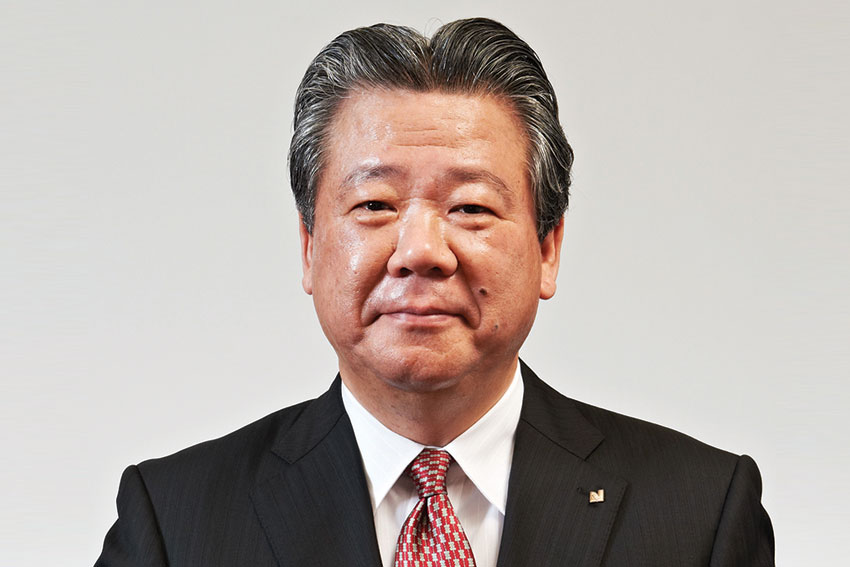Every challenge also brings opportunity: Japan’s aging population and shrinking domestic market urges Japanese firms to innovate and expand overseas for new opportunities

Few countries epitomize better than Japan the challenges looming over the future of many advanced economies. Its population is aging and fell by nearly one million between 2010 and 2015; as a result, the country’s workforce is expected to decrease massively, urging Japan to encourage more women to work and to take in more immigrants. Otherwise, public spending will soon become unsustainable.
Japan’s domestic market is shrinking and, to make matters worse, the country’s manufacturers are seriously challenged by competitors in South Korea, China, Europe and the U.S. on the global market. That is why Japan Inc. is working to rediscover its innovative edge in order to compete overseas.
Despite those mounting difficulties, Japan is also well equipped to successfully ride the wave of globalization, provided it seriously ups its innovation capacities. This does not only apply to its traditionally cutting-edge industries, but also to other sectors that need a deep transformation.
Progress is already tangible in Japan’s $50 billion packaging sector. This industry hardly makes the headlines, but its current technological and customer-centred drive makes up for its apparent lack of fanciness. It is quickly adapting to diverse contemporary lifestyles and developing R&D-intensive products to match current needs.
Japanese eCommerce is one industry riding the globalization wave. Rakuten, a leading local online shopping platform, has a bigger market share than the Japanese subsidiaries of Amazon and Yahoo. This gives an idea of the extent to which eCommerce has a resolute local flavour there. This industry has proved especially effective at using Japan’s ever-evolving mentality as a template for its business policy.
Another illustrative example of the Japanese innovative approach is the ready-made food sector, which is booming as a result of the rise of single-person households and ageing consumers. Kewpie, a foodsmanufacturing company, relies on highly-quality, mostly non-GMO products to cater for its health-conscious elderly clientele. Paradoxically, it all started with a much younger kind of customer – babies. “Our expertise in the baby food business has enabled us to acquire some techniques which have led to the development of soft-textured nursing care food and to expand into the aging society business”, explains President, Minesaburo Miyake.
Kokubu, a Japanese processed food and logistics company, is another example of that shift to the elderly. Its Executive Vice President and COO, Akira Kokubu, admits he is always “looking towards the edge of society” in order to find new consumers in Japan’s shrinking domestic market.
Adaptation is the sacred rule, but Japanese consumers also need to feel that their health is being looked after. Kazuhide Nakano, Chairman and CEO of Mizkan Holdings, a manufacturer of seasoning products, has managed to educate customers so that they can distinguish between the healthy brewed vinegar his company produces and the synthetic one that is the staple of the Japanese table. “What we did was a quite good deed, not only for the industry but also for the consumers”, Mr. Nakano says.
Ethical principles are indeed gaining ground and becoming a cornerstone of Japanese marketing techniques. Kunio Otani, President of Nichirei, a top producer of frozen foods, explains how his company relies on its environmental values as a means of differentiating itself from competitors: “Our corporate social responsibility program comprises three main pillars. The most important is preventing global warming. The second is enabling sustainable production in the global food supply, and the third is maintaining biodiversity. Nature’s bounty is what allows us to continue as a company”, he explains.
The challenge for Japanese business is not just understanding the new needs of domestic customers, but doing the same overseas. This has proven much more difficult for a corporate culture that tends to have rigidly local views and little inclination to unclench its centralized fist. But a shrinking domestic market means that Japan needs to go beyond its borders and embrace globalization full-heartedly.
Many Japanese companies are looking at the U.S. market for their expansion, but have to work hard to re-establish their country’s reputation as a high-quality manufacturer. That is the case of Calbee, a leader in the local savoury snack market which is partially owned by Pepsico. According to its Chairman, Akira Matsumoto, the ‘Made in Japan’ brand is not strong in the U.S., but the company’s focus on healthy snacks has brought Calbee products to Walmart’s fresh vegetables area.
Thanks to its good chemistry with globalization, the food industry has become an unlikely standard-bearer for the international resurgence of Japanese products. Mr. Miyake of Kewpie expresses how difficult this process is for companies that have traditionally depended on the national market: “One of the main challenges we face is to really think globally. Adapting to a new consumer model can be tricky”.
Now Japanese managers are buying overseas companies and relying on their local know-how. That is exactly what Nichirei has done in the U.S., where it has acquired the company InnovAsian. “We are creating products for the American market as an Asian food company catering to American tastes”, says Mr. Otani.
As for Kokubu, it is focusing its expansion efforts a little closer to home. “At present we are running a five-year business plan, which went into effect this year and which articulates around two main strategies: the first one is to focus on the food market in Japan, and the second one is to enhance our international expansion.”
0 COMMENTS